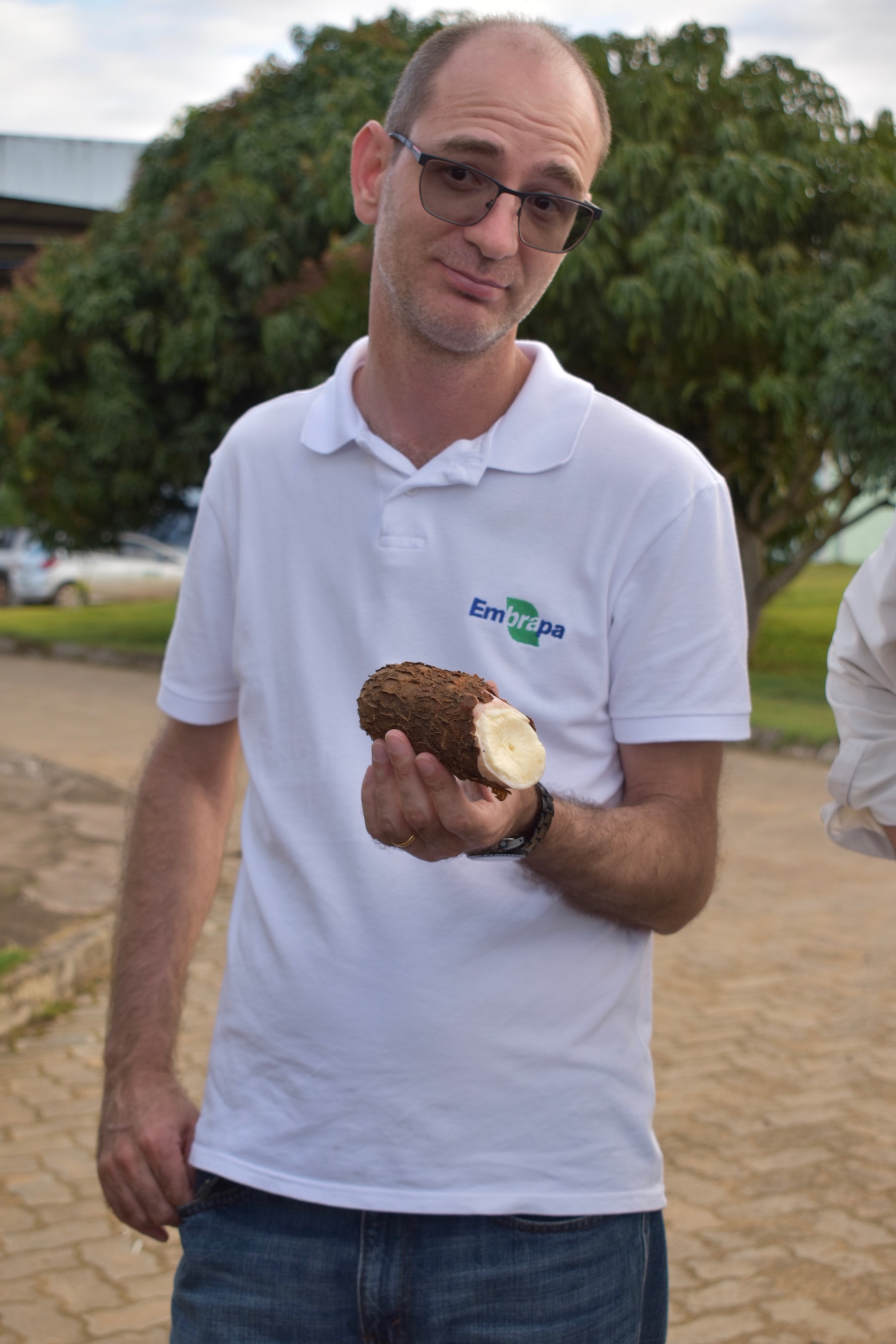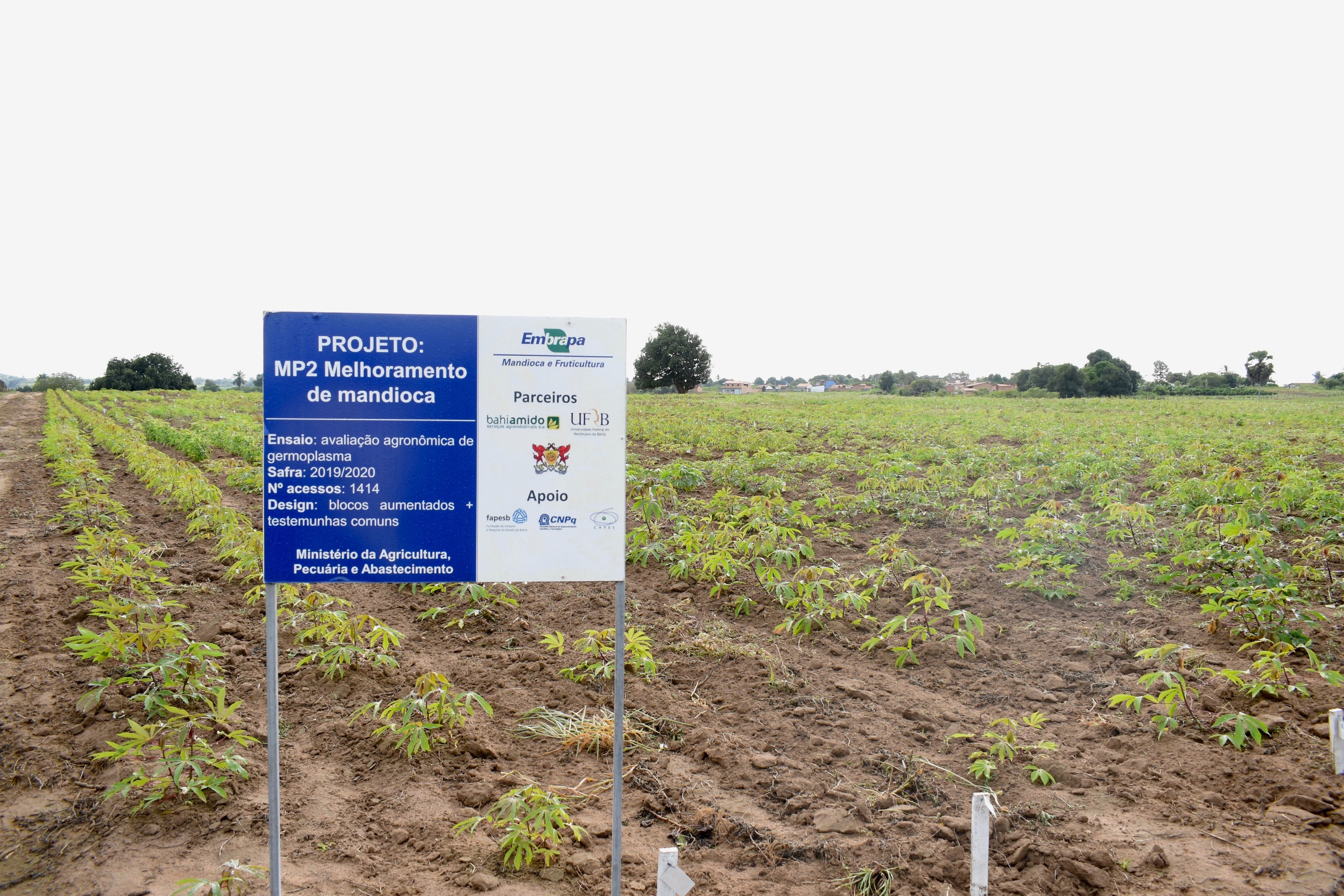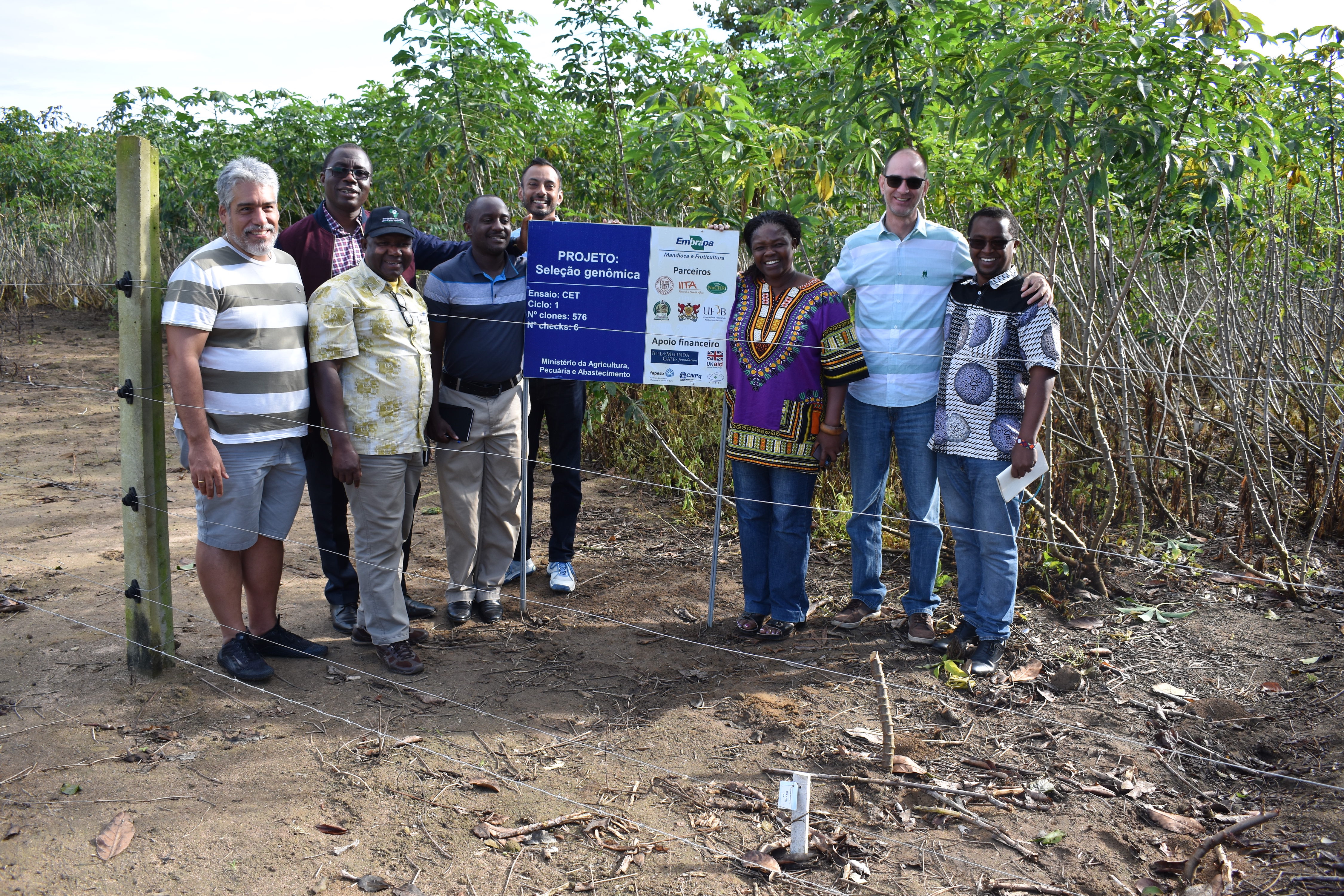The Brazilian Agricultural Research Corporation (EMBRAPA) and its partners from the National Agricultural Research System have been challenged to develop a genuinely Brazilian tropical agriculture and livestock model, to overcome constraints for producing food, fiber, and fuel. In addition, EMBRAPA has participated in a broad South-South International Cooperation network, transferring and adapting Brazilian technologies to the tropical realities of several countries.
As part of EMBRAPA’s mission, the R&D activities for cassava improvement have a strong connection with the international research agenda focused on solving major crop challenges. These challenges include developing varieties with the ability to achieve high yields and root quality even in low chemical-input systems, with the genetic diversity needed to maintain yield stability under the new climate changes issues. Based on these assumptions, EMBRAPA joined the NextGen Cassava project in 2016, aiming to implement genomic selection (GS) in its breeding program to more rapidly develop varieties that meet grower and consumer preferences.
We spoke with NextGen’s lead breeder from EMBRAPA, Eder de Oliveira, about this important partnership and how the work produced benefits both the NextGen project and EMBRAPA.

What are the main activities/objectives being accomplished here?
Within the collaborative multi-institutional effort created by NextGen Cassava, EMBRAPA has been implementing GS and studying strategies to increase flowering rate by focusing on the following activities:
- Genomic selection (GS): Our breeding program has been focusing on high root and starch yield, root quality traits (especially beta-carotene and cooking quality), as well as disease resistance and drought tolerance. We are finalizing the second cycle of GS and have confirmed that genomic prediction methods, combined with genetic models, are efficient for selecting the best clones and parents. In the coming years, we will apply GS to the Brazilian germplasm to evaluate the genetic gain for cassava root yield and quality.
- Germplasm exchange: Brazilian cassava germplasm presents a huge potential for unique germplasm exchange with African partners. EMBRAPA will provide parents selected from NextGen Cassava trials, wild relatives, and other germplasm sources to African breeding programs. So far, parents of EMBRAPA’s training populations have already been shipped to Leibniz Institute DSMZ, and the Transfer Terms to export 3,500 botanical seeds of 10 wild species and parents from the different cycles of GS are underway.
- Flowering induction: To improve flowering and fruit set in cassava, we first demonstrated that through grafting, floral stimulation can be transferred from a high-flowering genotype to low-flowering elite varieties. To correlate the effects of climate factors on flowering phenology, EMBRAPA’s cassava genebank was evaluated at different growth stages during the 12-month cycle. For the most of the cassava germplasm, the flowering occurred during the longest photoperiod. So, increasing photoperiod may contribute to flowering improvement. We are currently subjecting contrasting cassava varieties to different treatments to increase seed yield, such as: extension of the photoperiod with red LED light, premature pruning of the branches, and application of BA (Benzyladenine). Treatment levels will follow the best practices suggested by the studies carried out by CIAT, Cornell University, and African partners.
- NIRS predictions: The use of near-infrared spectroscopy (NIRS) as a high-throughput, low cost and non-destructive tool for predicting important agronomic traits in cassava such as carotenoid content, dry matter content, starch yield, and cooking time. NIRS spectra of these samples are being used to build prediction models using portable equipment (ASD and Scio) and benchtop (Buchi NIRFlex500). It is expected that our phenotypic data and NIRS spectra can be used to build global predictive models that can be used across countries and breeding programs.
- Marker-assisted selection (MAS): We are mining the Brazilian germplasm resource (including landraces and modern breeding lines) to investigate the population structure and perform association mapping (GWAS) to characterize the genetic architecture of cyanide compound, and also to develop Kompetitive Allele Specific PCR (KASP) assays for MAS in cassava.

For the students working on NextGen at EMBRAPA, what is their work focused on?
Currently, we have two Master’s Degree students, two Doctoral students, and two Post-Doc researcher working on the NextGen Cassava project. Most of these students are supported by scholarships provided by the Brazilian government through the Coordination for the Improvement of Higher Education Personnel (CAPES) and the Brazilian National Council for Scientific and Technological Development (CNPq). Their key role on the project is:
- Ravena Rocha Bessa de Carvalho (MSc student): Genetic diversity of the Brazilian cassava germplasm for quality root traits (carotenoid content, cyanogenic compounds and dry matter content) and development of high-throughput phenotyping (HTP) for these traits using near-infrared spectroscopy (NIRS).
- Geisa Matos (MSc student): Assessment of amylose and amylopectin variability in cassava germplasm and the development of rapid predictive method based on near-infrared spectroscopy (NIRS) to measure cassava starch quality parameters.
- José Henrique Bernardino Nascimento (PhD student): Unlocking diversity in cassava collections via genome-wide association mapping: a case study based on resistance to shoot diseases.
- Lívia Gomes Torres (PhD student): Implementation of genomic selection and marker-assisted selection for increasing root and starch yield, and delivery germplasm with relevant genetic diversity to the elite breeding program, as well as new tools for shortening the breeding cycle and increase the efficiency of the cassava program.
- Luciano Rogério Braatz de Andrade (Post-Doc): Practical implementation of genomic selection in the cassava breeding program, as well as development of enhancement strategies to ensure that the cassava breeding activities meet both long- and short-term genetic gain; and the integration of genetic, phenotypic, and pedigree information into a standardized framework for germplasm enhancement and delivery to end users.
- Massaine Bandeira e Sousa (Post-Doc): Management of large genetic data sets for gene discovery via genome-wide association study (GWAS) in cassava, including data QC, model fitting and statistical analysis, as well as dissemination of results. A main focus is the association mapping populations for cyanide content, flowering ability and cross-ability in cassava.
Has the partnership/involvement with NextGen benefited EMBRAPA? In what ways?
Through our work with NextGen Cassava, significant progress has been made in the field of breeding, genetics, and bioinformatics. A lot of phenotypic and genotypic data were collected and stored in the database in the past three years, which we will put to use in the breeding pipeline to develop new varieties, and for genomic approaches for understanding the genetics of disease complex in cassava. Moreover, NextGen Cassava brings together the main national and international programs devoted to cassava research and development, in which key benefits are the strengthening of partnerships and skills for optimizing the breeding scheme and data collection in the field.
How does NextGen fit into EMBRAPA’s overall mission and goals?
EMBRAPA has an intense scientific cooperation program with several international institutions to promote the continuous exchange of technology and knowledge that increase agricultural efficiency. The constant information exchange and the rapid dissemination of NextGen results of all partner institutions has allowed a rapid redirection of the R&D activities to achieve the outputs and deliver products (especially new varieties) that can meet growers and consumers preferences. The current collaboration with NextGen Cassava has contributed to EMBRAPA’s mission of providing solutions for sustainable development of agricultural through knowledge and technology transfer.

How do you see NextGen and EMBRAPA’s partnership moving forward?
EMBRAPA’s cassava breeding program has learned a lot with the NextGen Cassava partnership and also with the Brazilian private sector. Although cassava is considered a food security crop, often cultivated in marginal lands, the commercial cultivation with higher inputs for cassava has become an important target, even for smallholder farmers.
In the next phases of the NextGen Cassava project, we intend to keep working on the development of methods, techniques and processes that can increase genetic gains in cassava, and consequently increase the efficiency of the breeding program. We will also select and develop cassava cultivars in partnership with the private sector to maximize the chances of adoption of the improved materials. In addition, we intend to continue developing simple techniques for cultivation and conducting field trials that allow minimum intra and inter plot variation, to improve the reliability in obtaining phenotypic data for complex attributes and therefore better accuracy in the genomic predictions.
We would like to take advantage of the NextGen Cassava network and expertise established in different areas of knowledge to put these ideas into practice, and thereby help to increase the sustainability and competitiveness of cassava in Brazil and Africa.
Anything else you think is relevant? What else is notable about EMBRAPA?
Cassava originated in the Amazon region of South America, and Central Brazil has the largest number of wild Manihot species; it is considered the epicenter of cassava diversity. Therefore, a large panel of genetic diversity can be found in Brazil. An extensive characterization of this germplasm may reveal useful new alleles for several agronomic attributes of wide importance in breeding programs, and thus increase the use of cassava genetic resources for breeding purposes. Specifically, under the NextGen Cassava project, we are conducting a series of phenotyping for disease resistance (anthracnose and cassava bacterial blight), PPD and drought tolerance in different ecozones in Brazil. Certainly, most of this germplasm can be useful for breeding and for identifying the main quantitative trait loci with high resolution by exploiting past recombination events between germplasm.





